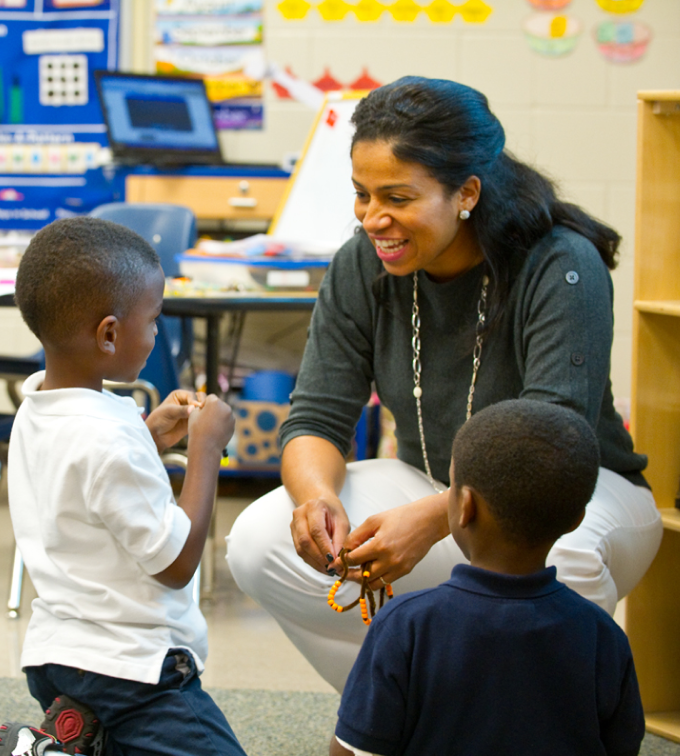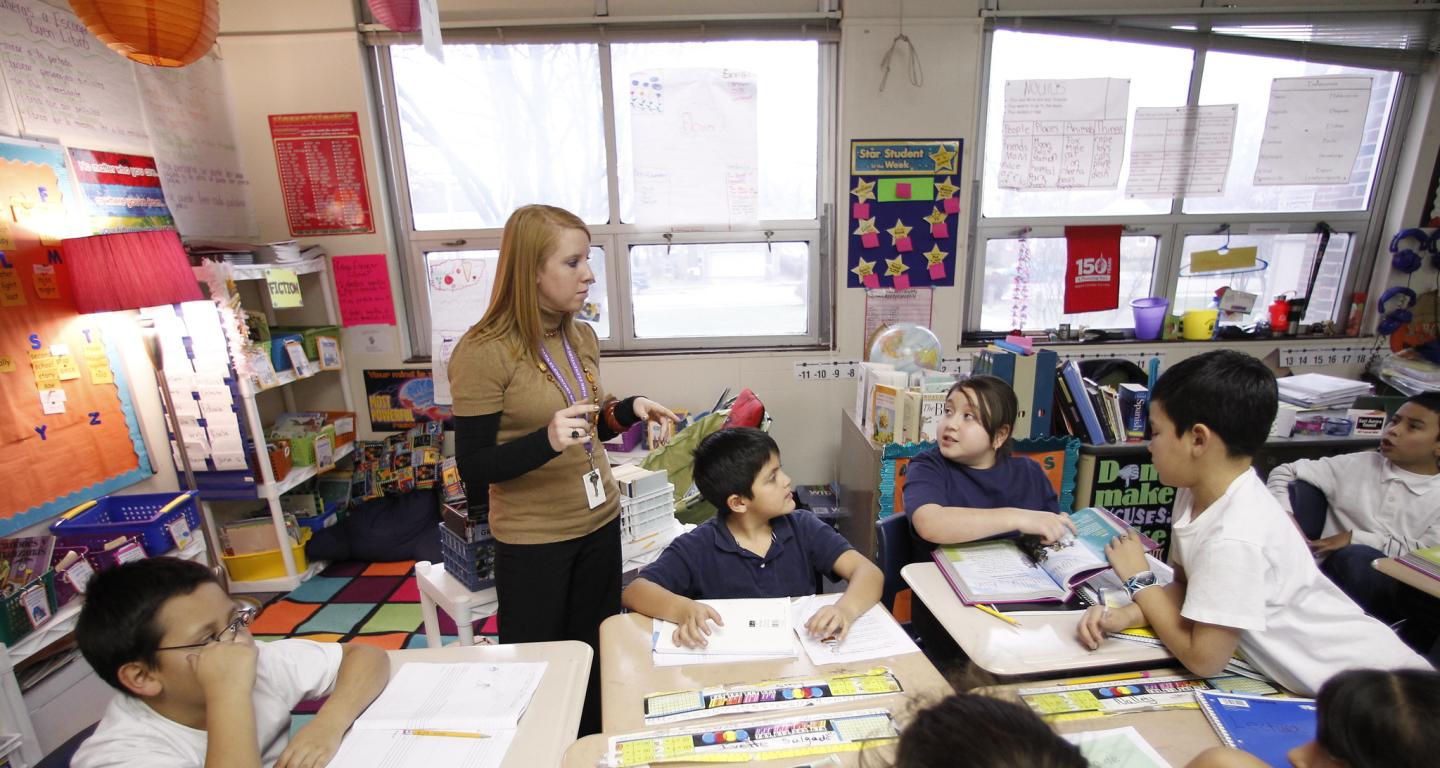Checking Out the Various Teaching Techniques in Key Science Education And Learning Today
Inquiry-based learning, hands-on experiments, and the integration of innovation are redefining exactly how teachers engage young minds. Furthermore, joint approaches and differentiated instruction are being employed to provide to the varied needs of pupils, enhancing both engagement and understanding.
Inquiry-Based Learning
Inquiry-Based Knowing (IBL) is a pedagogical approach that encourages students to explore clinical ideas through questioning, examination, and hands-on experimentation. This technique emphasizes the role of pupils as energetic participants in their understanding, advertising critical reasoning and analytic skills. By involving with real-world concerns, trainees become curious and inspired, which enhances their understanding of scientific principles.
In IBL, teachers function as facilitators, directing students as they navigate their inquiries instead than delivering details directly. This student-centered method permits distinction, fitting various finding out designs and speeds. Trainees create abilities in creating theories, creating experiments, and examining data, which are crucial for clinical literacy.
In addition, IBL fosters collaboration among trainees, encouraging them to share ideas and searchings for. This cumulative inquiry advertises social abilities and a sense of community within the class. Additionally, the procedure of inquiry urges durability, as pupils learn to welcome failure as a tipping stone towards understanding.
Hands-On Experiments
Hands-on experiments are an important element of reliable science education and learning, complementing the principles of inquiry-based understanding. These experiments enable trainees to involve directly with scientific principles, cultivating a deeper understanding with experiential understanding. By manipulating materials and observing end results, young students can understand abstract theories in concrete methods.
Such tasks promote critical thinking and analytical skills, as trainees assume outcomes, conduct experiments, and evaluate results. This process motivates them to ask questions, fine-tune their understanding, and establish a scientific frame of mind. Moreover, hands-on experiments can be customized to varied understanding designs, ensuring that all students have the opportunity to engage meaningfully with the content.
Moreover, hands-on experiments typically motivate partnership among peers, promoting teamwork and communication skills. Operating in teams allows pupils to share concepts, go over findings, and pick up from one an additional, which boosts their total instructional experience.
Integrating hands-on experiments into the key science curriculum not just enhances the learning setting but additionally grows a lifelong interest in scientific research. By proactively taking part in their education, students are most likely to create an enthusiasm for scientific query that extends beyond the classroom.

Technology Assimilation
Incorporating modern technology into primary science education has become progressively crucial in fostering trainee involvement and boosting finding out end results. Making use of digital devices, such as interactive simulations, online laboratories, and academic software program, gives students with chances to check out scientific concepts in innovative methods. These resources help with a deeper understanding of complex topics by allowing learners to imagine and manipulate variables that would be not practical in a typical class setup.
In addition, modern technology combination motivates individualized finding out experiences. Students can progress at their very own speed, reviewing difficult concepts via multimedia sources, which accommodate different knowing styles. This flexibility not just supports specific development however also grows a sense of autonomy in learners.
Additionally, technology functions as a bridge to real-world science, attaching trainees with present research and specialist contributions. Accessibility to clinical journals and on the internet data sources broadens students' viewpoints on scientific questions and fosters crucial thinking abilities.
Collaborative Knowing
Joint knowing plays an essential duty in main scientific research education by cultivating teamwork and interaction abilities among pupils. This technique motivates students to function together, share expertise, and engage in analytical, which boosts their understanding of clinical concepts. By taking part in team activities, trainees find out to verbalize their concepts, listen to diverse viewpoints, and negotiate options, all of which are see it here crucial skills in both academic and real-world contexts.

Research study shows that collaborative knowing can bring about enhanced motivation and involvement in science subjects, as pupils find pleasure in common experiences (primary science tuition Singapore). In addition, this approach prepares trainees for future joint endeavors, furnishing them with the skills needed for reliable teamwork in college and professional environments. Eventually, accepting joint learning in main scientific research education and learning can significantly enrich the knowing experience and promote a deeper understanding of scientific inquiry
Separated Guideline

Differentiated guideline Home Page can manifest in different means, such as differing the material, procedures, or products of understanding. For example, instructors might make use of tiered projects that give varying levels of intricacy, permitting students to work at their corresponding readiness degrees. In addition, adaptable organizing techniques can promote collaboration among trainees with different capabilities, promoting peer understanding.
Assessment plays a crucial role in this method, as it notifies direction and assists teachers comprehend each pupil's one-of-a-kind demands. Developmental analyses, such as monitorings and tests, can guide teachers in adjusting their strategies to boost learning outcomes. primary science tuition Singapore. Ultimately, by implementing distinguished direction in primary science education, teachers can cultivate a more fair and reliable discovering atmosphere, equipping all students to reach their complete possibility in comprehending clinical phenomena
Conclusion
In recap, the varied teaching strategies in primary science education and learning, including inquiry-based knowing, hands-on experiments, modern technology assimilation, collective knowing, and distinguished guideline, jointly add to an extra efficient learning environment. These techniques advertise crucial reasoning, analytical skills, and a much deeper comprehension of clinical ideas. By applying these methods, educators can produce supportive and appealing class that deal with the varied demands of trainees, inevitably fostering a long-lasting interest in science and enhancing scholastic achievement.
Inquiry-Based Discovering (IBL) is an instructional method that urges students to discover scientific principles via doubting, examination, and hands-on experimentation.Collective learning plays a crucial duty in primary science education and learning by cultivating team effort and interaction skills among trainees.Study indicates that collective understanding can lead to enhanced motivation and interaction in scientific research topics, as students find pleasure in shared experiences.In fostering a comprehensive learning setting, separated instruction emerges as an essential technique to accommodate the varied requirements and capacities of students in key scientific research education and learning. Eventually, by implementing differentiated instruction in primary science education and learning, instructors can grow a much more equitable and effective understanding dig this atmosphere, equipping all pupils to reach their full potential in understanding clinical sensations.
Comments on “Unlock Your Child’s Potential with Primary Science Tuition Singapore”